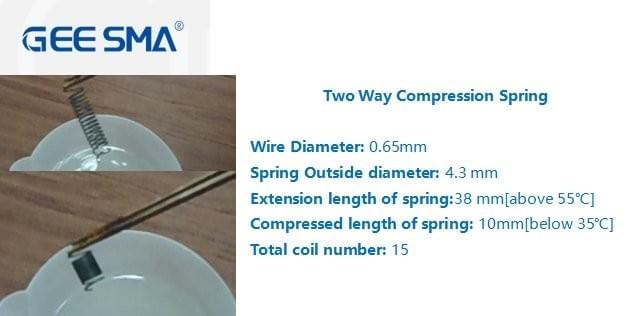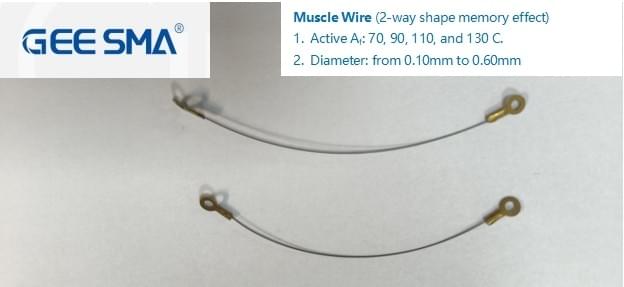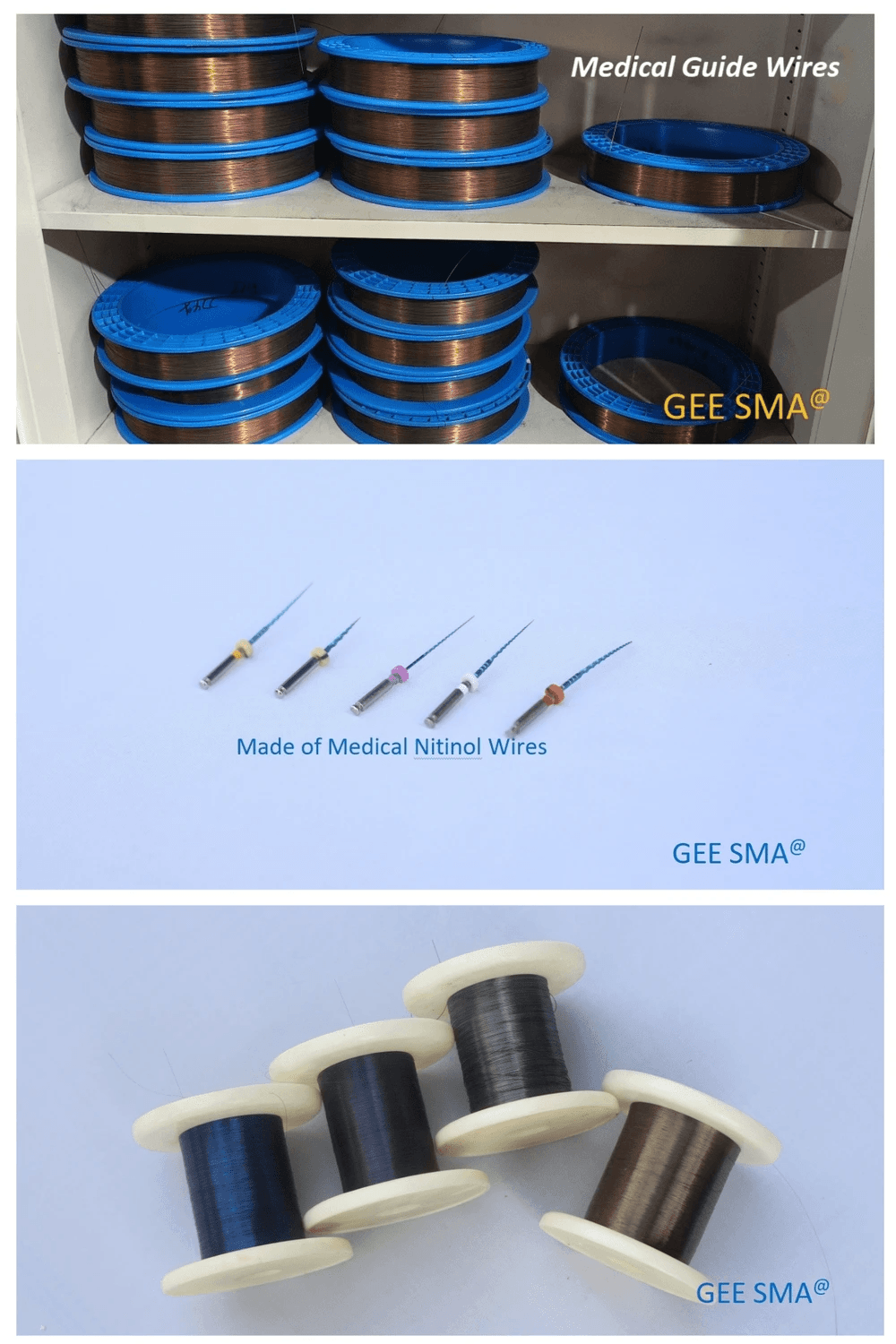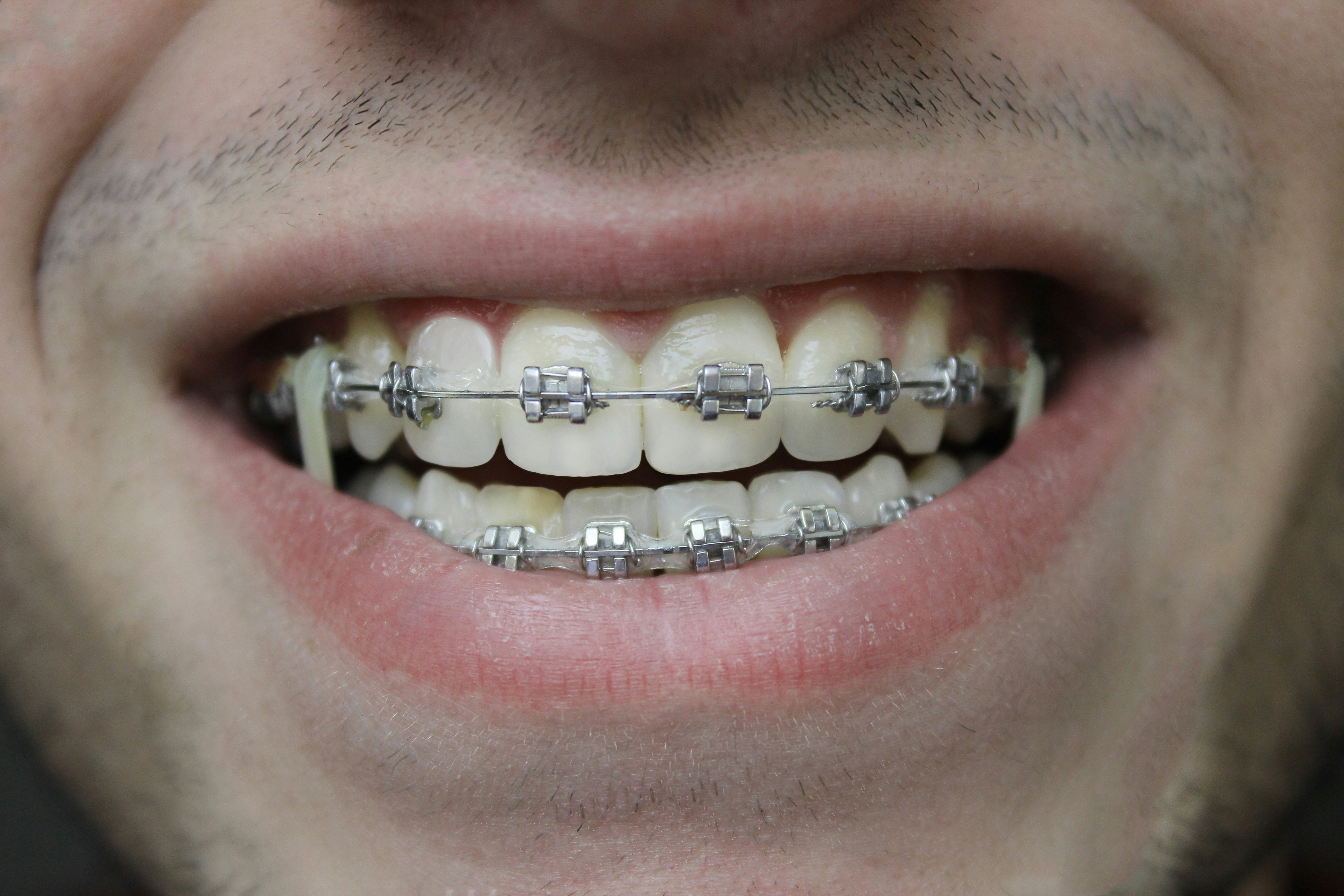Introduction

In the world of orthodontics, understanding the intricacies of Niti coil spring orthodontic appliances is essential for both practitioners and patients alike. These specialized tools play a pivotal role in modern orthodontic treatment, helping to achieve desired tooth movement with precision and efficiency. As we dive into the realm of Niti coil springs, it’s crucial to recognize their significance and explore the various options available.
Understanding Niti Coil Spring Orthodontics
Niti coil spring orthodontic devices are crafted from nickel-titanium alloy, which gives them unique properties that enhance their performance in dental treatments. This innovative material allows for continuous force application, making them particularly effective in moving teeth gradually into their ideal positions. By understanding what a Niti closed coil spring is used for, one can appreciate how these springs contribute to achieving a beautiful smile.
Importance of Coil Springs in Treatment
Coil springs serve as vital components in orthodontics by facilitating tooth movement while minimizing discomfort for patients. They provide consistent pressure over extended periods, which is crucial for effective treatment outcomes. Whether you’re wondering why you have a coil spring on your braces or how they interact with other appliances, knowing their importance can ease concerns and enhance your treatment experience.
Overview of Niti Coil Spring Options
When it comes to Niti coil springs, there are several types to consider based on specific treatment needs—each with its own unique benefits and applications. The three types of coil springs—closed coils, open coils, and customized options—offer versatility in addressing various orthodontic challenges. By exploring these options further, patients can make informed decisions about their treatment plans while enjoying the advantages that come with using a Niti coil spring orthodontic device.
What is Niti Coil Spring Orthodontic?

Niti coil spring orthodontic devices are specialized components used in braces to facilitate tooth movement. These springs are designed to apply consistent force over time, aiding in the alignment of teeth and improving overall dental aesthetics. Understanding how these springs work can demystify their role in orthodontic treatment and help patients feel more informed about their options.
Definition and Mechanism of Action
A Niti coil spring is a type of orthodontic device made from nickel-titanium alloy, which allows it to exert a continuous force on the teeth. This gentle pressure encourages teeth to shift into their desired positions gradually, making them an essential tool for orthodontists. The mechanism behind these springs relies on their unique ability to return to their original shape after being compressed or stretched, providing a reliable force throughout the treatment process.
Material Composition and Benefits
The material composition of Niti coil springs primarily includes nickel and titanium, which gives them remarkable elasticity and strength. This combination not only enhances durability but also allows for greater flexibility compared to traditional metal springs. The benefits of using Niti coil springs include improved comfort for patients, reduced treatment time due to efficient tooth movement, and lower likelihood of breakage during the course of treatment.
Key Advantages Over Traditional Springs
When comparing Niti coil spring orthodontic devices with traditional springs, several key advantages emerge. For starters, Niti coil springs provide a more consistent force over extended periods, minimizing discomfort associated with sudden changes in pressure that can occur with conventional options. Additionally, they are less prone to deformation or loss of tension over time, ensuring that the desired tooth movements remain effective throughout the entire treatment duration.
Types of Niti Coil Springs

When it comes to Niti coil spring orthodontics, understanding the different types available is essential for both orthodontists and patients. These springs play a crucial role in achieving effective tooth movement, making it important to choose the right type for individual treatment needs. In this section, we’ll explore the various types of Niti coil springs, focusing on their unique characteristics and applications.
Overview of Different Types
Niti coil springs come in several varieties, each designed for specific purposes within orthodontic treatments. The primary types include closed coil springs, open coil springs, and a third category that combines features from both. Understanding what these types offer can help answer questions like What is a Niti closed coil spring used for? or What are the three types of coil springs? Each type serves a distinct function in moving teeth into their desired positions efficiently.
Closed coil springs are typically used for applying continuous force over a shorter distance, while open coil springs provide more flexibility over longer distances with less force applied. This makes each type suitable for different phases of treatment or specific patient needs. By recognizing these differences, patients can better understand why they may have been fitted with certain coils on their braces.
Comparison of Closed Coil Springs
Closed coil springs are particularly popular in Niti coil spring orthodontics due to their ability to maintain consistent pressure on teeth throughout treatment. They are often employed when there's a need to close spaces between teeth or align them more closely together effectively. This raises the question: “What is a Niti closed coil spring used for?” In essence, they’re ideal for tasks requiring precise control over tooth movement.
In contrast to open coils, closed coils exert greater force but cover less distance at any given time—making them perfect for fine-tuning adjustments as treatment progresses. Patients might find that they experience different sensations depending on which type they're using; closed coils often create a tighter feeling as they work harder to shift teeth into alignment quickly and efficiently.
Understanding these nuances helps clarify why an orthodontist might choose one over the other based on individual patient scenarios—after all, every smile has its own journey!
Unique Features of Open Coil Springs
Open coil springs bring their own set of advantages within the realm of Niti coil spring orthodontics that make them indispensable in certain cases. Unlike their closed counterparts, open coils allow more space between turns which translates into lighter forces acting on teeth over longer distances—a key feature when dealing with larger gaps or extensive spacing issues among teeth.
Patients frequently ask themselves: “Why do I have a coil spring on my braces?” If you’re fitted with an open coil spring, it's likely because your orthodontist aims to create space gradually without overwhelming your dental structure with too much pressure at once—perfectly suited for those who may be sensitive to discomfort during treatment.
Additionally, open coils can be adjusted easily by simply adding or removing sections according to changing treatment requirements; this adaptability is what sets them apart from other options available in the market today! Whether you’re navigating through complex tooth movements or just starting out with braces altogether, knowing about these unique features empowers patients as they embark on their orthodontic journey.
Applications of Niti Closed Coil Springs

Niti closed coil springs are versatile tools in the world of orthodontics, playing a pivotal role in various treatment scenarios. They are primarily used to apply consistent force on teeth, aiding in their movement and alignment. Understanding what a Niti closed coil spring is used for can help patients appreciate its significance in their orthodontic journey.
What is a Niti Closed Coil Spring Used For?
A Niti closed coil spring is designed to exert continuous pressure on teeth, making it an essential component for achieving desired tooth movements. This type of coil spring is particularly effective for closing spaces between teeth or maintaining space during treatment. By utilizing the unique properties of nickel-titanium, these springs can provide gentle yet effective force, ensuring patient comfort while promoting optimal results.
Specific Use Cases in Orthodontic Treatment
In orthodontic treatment, Niti closed coil springs find application in several specific scenarios. One common use case is during space closure after tooth extraction; they help pull adjacent teeth together seamlessly. Additionally, they can be employed to maintain arch length and assist with the alignment of misaligned teeth throughout the treatment process.
Moreover, when addressing crowding issues or gaps between teeth—questions like What are the three types of coil springs? often arise—it's essential to note that closed coil springs excel at providing the necessary force for such adjustments without compromising comfort or effectiveness. Their ability to adapt to individual patient needs makes them indispensable in modern orthodontics.
Interactions with Other Orthodontic Appliances
The effectiveness of Niti closed coil springs often shines through their interactions with other orthodontic appliances. These springs work harmoniously with brackets and archwires to create a comprehensive system that guides tooth movement effectively and efficiently. When patients wonder, Why do I have a coil spring on my braces? it's usually because these coils enhance the overall functionality of their braces by facilitating smoother adjustments and transitions throughout treatment.
Furthermore, when integrated into complex cases involving various appliances like expanders or retainers, Niti closed coil springs ensure that forces are distributed evenly across all components involved. This interaction not only streamlines the process but also contributes significantly to achieving desired outcomes faster than traditional methods would allow.
Understanding Coil Spring Functionality

In orthodontics, coil springs play a pivotal role in the movement and alignment of teeth. Specifically, the Niti coil spring orthodontic is designed to provide consistent force over time, which is crucial for effective treatment outcomes. By understanding how these springs work, patients can appreciate their importance in achieving a beautiful smile.
What is Coil Spring in Orthodontics?
A coil spring in orthodontics refers to a small, spiral-shaped device that exerts gentle pressure on teeth to facilitate movement. The Niti closed coil spring is particularly popular for its ability to maintain a steady force, which helps in closing spaces or aligning teeth effectively. So, what is a Niti closed coil spring used for? Primarily, it aids in the application of continuous force to specific teeth during the orthodontic treatment process.
How Coil Springs Aid in Tooth Movement
Coil springs are instrumental in guiding tooth movement by applying targeted pressure that encourages gradual repositioning. The unique properties of Niti (Nickel Titanium) allow these springs to return to their original shape after being stretched or compressed, ensuring consistent performance throughout treatment. This functionality not only enhances efficiency but also minimizes discomfort compared to traditional methods.
Relation to Overall Treatment Plan
The inclusion of Niti coil springs into an orthodontic treatment plan is strategic and intentional. These devices work harmoniously with other appliances like brackets and wires to achieve optimal tooth alignment and spacing as outlined by the orthodontist's plan. Understanding why you have a coil spring on your braces can help demystify your treatment process and reinforce your commitment to achieving your desired results.
Patient Insights on Coil Springs

Understanding why you have a coil spring attached to your braces can help demystify your orthodontic treatment. Niti coil spring orthodontic components are often utilized to create space, align teeth, or assist in the movement of specific dental structures. If you're wondering, Why do I have a coil spring on my braces?—it's typically because your orthodontist has identified a need for precise adjustments that these springs can facilitate.
Why Do I Have a Coil Spring on My Braces?
You might be asking yourself, What is a Niti closed coil spring used for? These springs play a crucial role in providing consistent force to move teeth into their desired positions. They are particularly effective for closing gaps between teeth or maintaining space during various stages of treatment. By applying gentle pressure over time, niti coil springs help achieve optimal alignment while minimizing discomfort.
Common Experiences and Concerns
Many patients express curiosity about what it feels like to have these springs in place and whether they will experience discomfort during their orthodontic journey. Common experiences include an initial feeling of tightness or pressure as the niti coil spring orthodontic device begins its work; however, this sensation usually subsides after a few days. Concerns often arise around maintenance and care; it's essential to communicate with your orthodontist if you notice any changes or if the coils feel excessively uncomfortable.
Tips for Managing Discomfort
Managing discomfort associated with niti coil springs doesn't have to be daunting! One effective strategy is to maintain good oral hygiene—brushing and flossing regularly can prevent irritation around the coils and brackets. Additionally, over-the-counter pain relievers can provide temporary relief if needed; just be sure to consult your orthodontist before taking any medication.
Conclusion
In summary, Niti coil spring orthodontics offers a modern and effective approach to orthodontic treatment. These innovative springs play a vital role in achieving precise tooth movement, enhancing patient comfort, and improving overall treatment outcomes. By understanding the benefits of Niti coil springs, patients can make informed decisions about their orthodontic care.
Benefits of Choosing Niti Coil Springs
Niti coil springs provide several advantages over traditional options, making them an attractive choice for both orthodontists and patients alike. One major benefit is their superior elasticity; they maintain consistent force over time which is crucial for effective tooth movement. Additionally, the lightweight design of Niti coil springs minimizes discomfort, allowing patients to focus on their daily activities without being distracted by bulky appliances.
When considering What is a Niti closed coil spring used for?, it's essential to note that these springs are particularly effective in closing spaces between teeth or maintaining space during treatment. Their ability to adapt to various forces makes them versatile tools in any orthodontic arsenal. Furthermore, the durability of Niti materials ensures that these coils can withstand the rigors of daily wear while providing reliable performance.
GEE SMA's Role in Advancing Orthodontics
GEE SMA has been at the forefront of innovations in orthodontic technology, particularly with regard to Niti coil spring orthodontics. Their commitment to research and development has led to the creation of high-quality products that enhance treatment efficiency and patient satisfaction. By continuously pushing boundaries within the field, GEE SMA plays a crucial role in advancing techniques and materials used by practitioners worldwide.
Understanding What are the three types of coil springs? helps highlight GEE SMA's diverse offerings—from closed coils designed for space closure to open coils aimed at providing lighter forces during treatment phases. This variety allows orthodontists to tailor treatments based on individual patient needs effectively. As GEE SMA continues its mission to innovate within this space, patients can expect even more refined options that make their journeys smoother.
Making Informed Choices in Orthodontic Treatments
Navigating through your orthodontic journey can be daunting; however, understanding key components like Why do I have a coil spring on my braces? empowers you as a patient. Coil springs are integral parts of many treatment plans because they facilitate targeted tooth movement while minimizing discomfort associated with braces or other appliances. Knowing how these components work helps reduce anxiety around appointments and adjustments.
As you consider your options for braces or aligners, keep in mind what constitutes coil spring in orthodontics—a tool designed not just for aesthetics but also for functional improvement within your oral health framework. Engaging with your orthodontist about specific applications will ensure you have tailored solutions suited for your unique dental structure and goals. Ultimately, being informed allows you to take charge of your dental health journey confidently.

